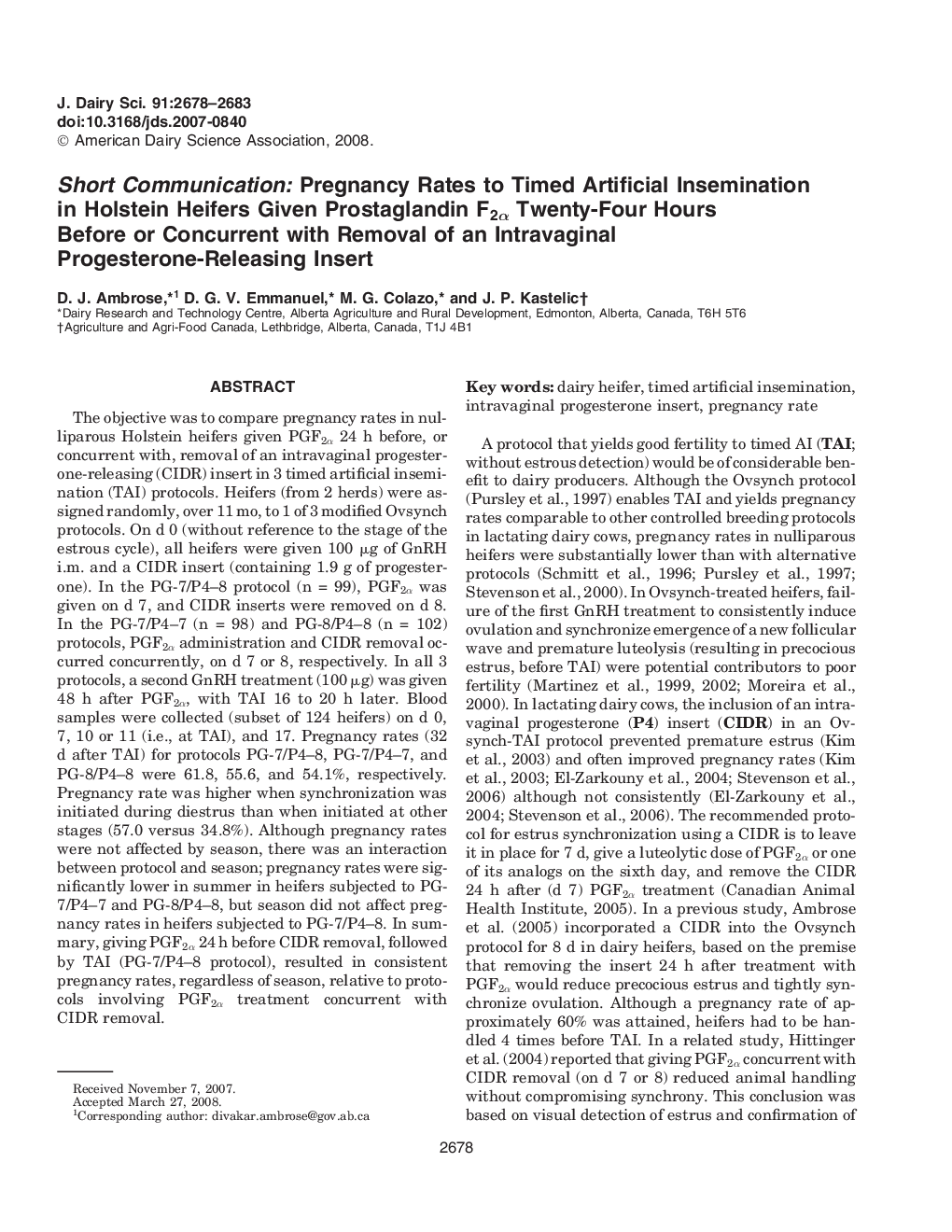| Article ID | Journal | Published Year | Pages | File Type |
|---|---|---|---|---|
| 2439908 | Journal of Dairy Science | 2008 | 6 Pages |
The objective was to compare pregnancy rates in nulliparous Holstein heifers given PGF2α 24 h before, or concurrent with, removal of an intravaginal progesterone-releasing (CIDR) insert in 3 timed artificial insemination (TAI) protocols. Heifers (from 2 herds) were assigned randomly, over 11 mo, to 1 of 3 modified Ovsynch protocols. On d 0 (without reference to the stage of the estrous cycle), all heifers were given 100 μg of GnRH i.m. and a CIDR insert (containing 1.9 g of progesterone). In the PG-7/P4-8 protocol (n = 99), PGF2α was given on d 7, and CIDR inserts were removed on d 8. In the PG-7/P4-7 (n = 98) and PG-8/P4-8 (n = 102) protocols, PGF2α administration and CIDR removal occurred concurrently, on d 7 or 8, respectively. In all 3 protocols, a second GnRH treatment (100 μg) was given 48 h after PGF2α with TAI 16 to 20 h later. Blood samples were collected (subset of 124 heifers) on d 0, 7, 10 or 11 (i.e., at TAI), and 17. Pregnancy rates (32 d after TAI) for protocols PG-7/P4-8, PG-7/P4-7, and PG-8/P4-8 were 61.8, 55.6, and 54.1%, respectively. Pregnancy rate was higher when synchronization was initiated during diestrus than when initiated at other stages (57.0 versus 34.8%). Although pregnancy rates were not affected by season, there was an interaction between protocol and season; pregnancy rates were significantly lower in summer in heifers subjected to PG-7/P4–7 and PG-8/P4–8, but season did not affect pregnancy rates in heifers subjected to PG-7/P4-8. In summary, giving PGF2α 24 h before CIDR removal, followed by TAI (PG-7/P4-8 protocol), resulted in consistent pregnancy rates, regardless of season, relative to protocols involving PGF2α treatment concurrent with CIDR removal.
